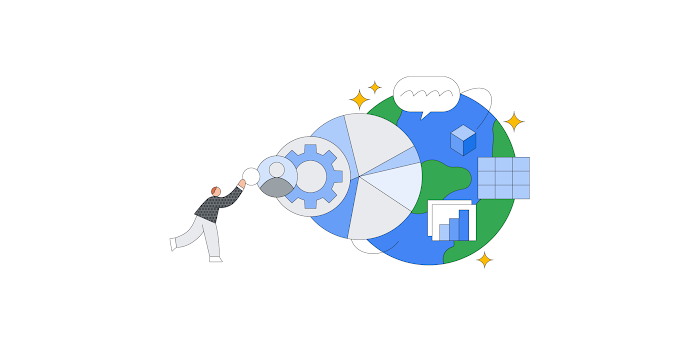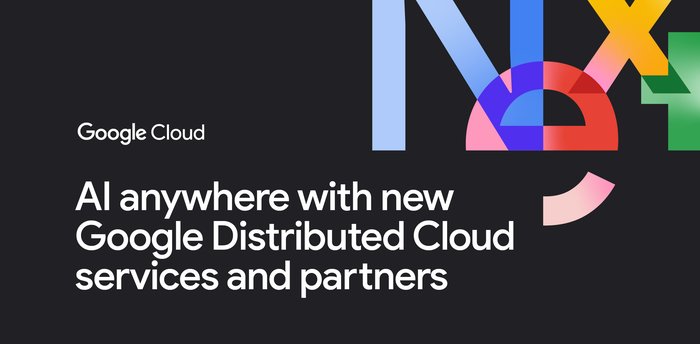A deeper look into retail use cases with Google Distributed Cloud Edge
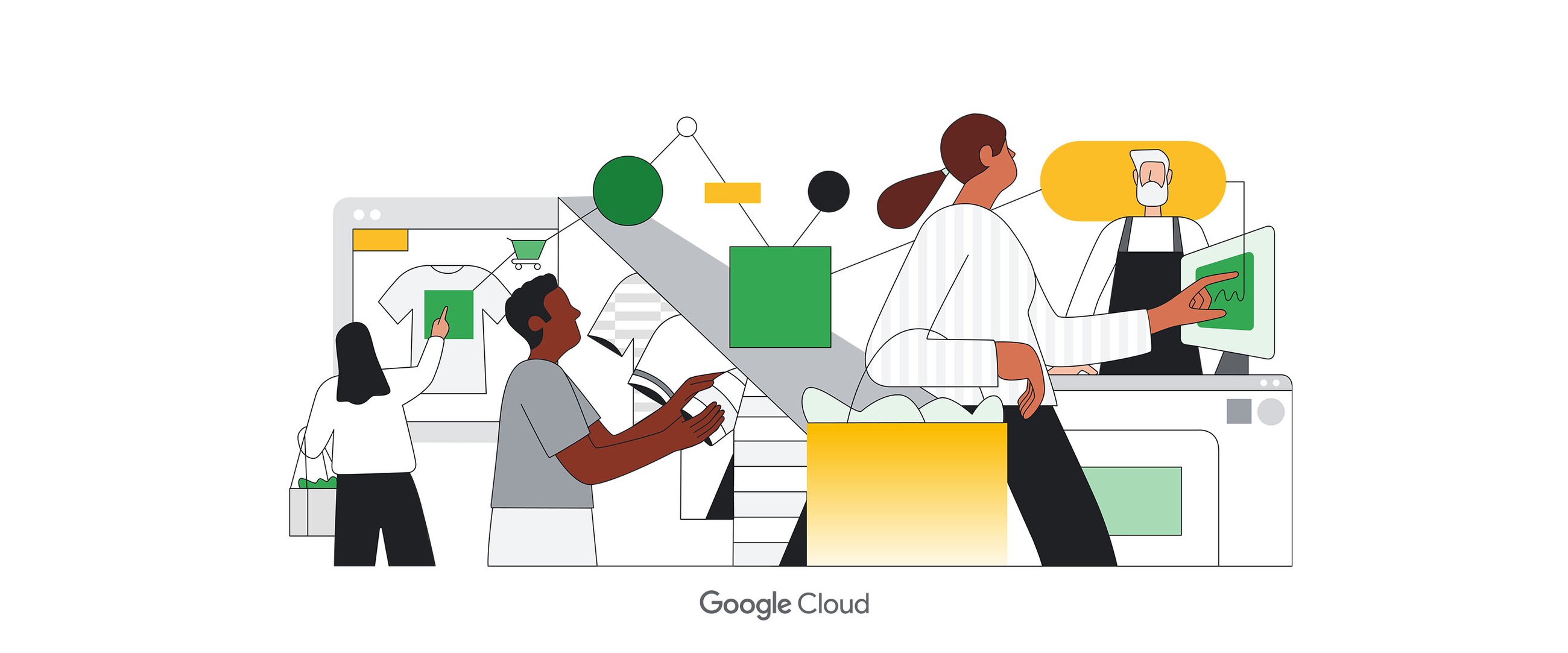
Schneider Larbi
Sr. Partner Engineer, Enterprise GSIs
Venu Vanama
Customer Engineer
Edge computing unlocks new opportunities for retailers to deliver better customer experiences while meeting cost and efficiency goals. For example, retailers can unlock use cases such as inventory detection, visual inspection, large scale data analysis among others.
In this blog post, we will take a deeper look at some of the key retail use cases at the edge such as:
- How retailers can capture real-time analytics at the edge
- How edge analytics can improve in-store customer experience
- How to overcome the challenges deploying applications at edge locations.
Challenges and use cases in retail
According to a survey conducted in the US by 451 Research and commissioned by Ayden, customer frustration from wait times cost retailers $37.7 billion in lost sales each year. Customers increasingly expect to be able to shop across in-store, online, and mobile channels with ease, and when they can’t, their frustration can drive them to go elsewhere or abandon the purchase altogether. This requires retailers to build systems that support omnichannel retailing such as inventory management, customer relationship management, and marketing automation systems.
To meet customer needs, retailers need to make data-driven decisions by collecting and analyzing data quickly. This omnichannel retailing solution should focus on those aforementioned inventory management, customer relationship management, and marketing automation systems, all of which require investments in data warehousing, data lakes, and business intelligence solutions.
This can lead to another major challenge: costs associated with rolling out hardware, software, and support services for IT infrastructure. Some retailers have multiple development ecosystems such as legacy on-premises systems and some cloud environments.
Supporting retail operations across these ecosystems for shopping centers with unified management capability and control can be incredibly difficult especially for large retailers. IT implementations can introduce costly complexities when performed across multiple locations across different platforms such as the cloud, legacy on-premises environments, including those without reliable network connectivity.
Security is also crucial for retailers as they try to mitigate security risks such as data breaches and cyber attacks to protect the integrity of their data and their customers’ data. Solving this means deploying various hardware and software solutions as well as promoting security-minded design methodologies that help ensure a secure shopping experience for customers.
A differentiated solution
Google Distributed Cloud (GDC) is a portfolio of fully managed hardware and software products that allows organizations to run workloads at edge locations and customer data centers.
Realistically, not all workloads can be migrated to the cloud due to compliance, latency, data residency requirements among others. GDC allows customers across Retail, Manufacturing, Telco, Automotive, Public Sector, Financial Services and many other industry verticals to run workloads on Google Cloud from virtually anywhere.
This solution can be a game-changer for retailers who are looking for effective ways to modernize retail customer experiences.
Using Google Distributed Cloud Edge, (GDC Edge), Google Cloud and Deloitte collaborate together to enable retailers to leverage edge capabilities such as associate productivity solutions, contactless checkout, in-store product scans, mobile contactless checkout, visual check-out monitoring, and unattended retail shops. Google Cloud and Deloitte enable retailers with the power to build modernized ‘‘intelligent stores,’ by unlocking use cases such as inventory detection and improving associate productivity.”
Retailers such as Kroger have used Google Cloud technologies with Deloitte to build systems that provide night crew managers visibility into volume of merchandise coming in, staff numbers, and stocking needs while assisting to prioritize their team’s activities — all in just a few clicks on their mobile device.
We see retail customers using edge solutions to achieve use cases such as frictionless checkout, real-time inventory monitoring, customer flow and shelf analytics, and natural-language-automated customer support. For all of these, GDC Edge can act as the underlying fully managed hardware and software platform to modernize current and future applications at the stores.
GDC Edge helps unlock the power of Google Cloud artificial intelligence (AI) and machine learning (ML) capabilities. Retailers can get real-time insights on statistics like the number of people in the shop at a time, detect hazards, perform analytics, identify customer shopping patterns, and improve workforce productivity. Watch how Kroger, Orange, Deloitte, and Google Cloud edge experts had to say about running AI at the edge to deliver modern customer experiences at Google Cloud Next in San Francisco.
This diagram highlights ways retailers can modernize their stores for improved customer experience and productivity with the power of Google Cloud and GDC Edge.
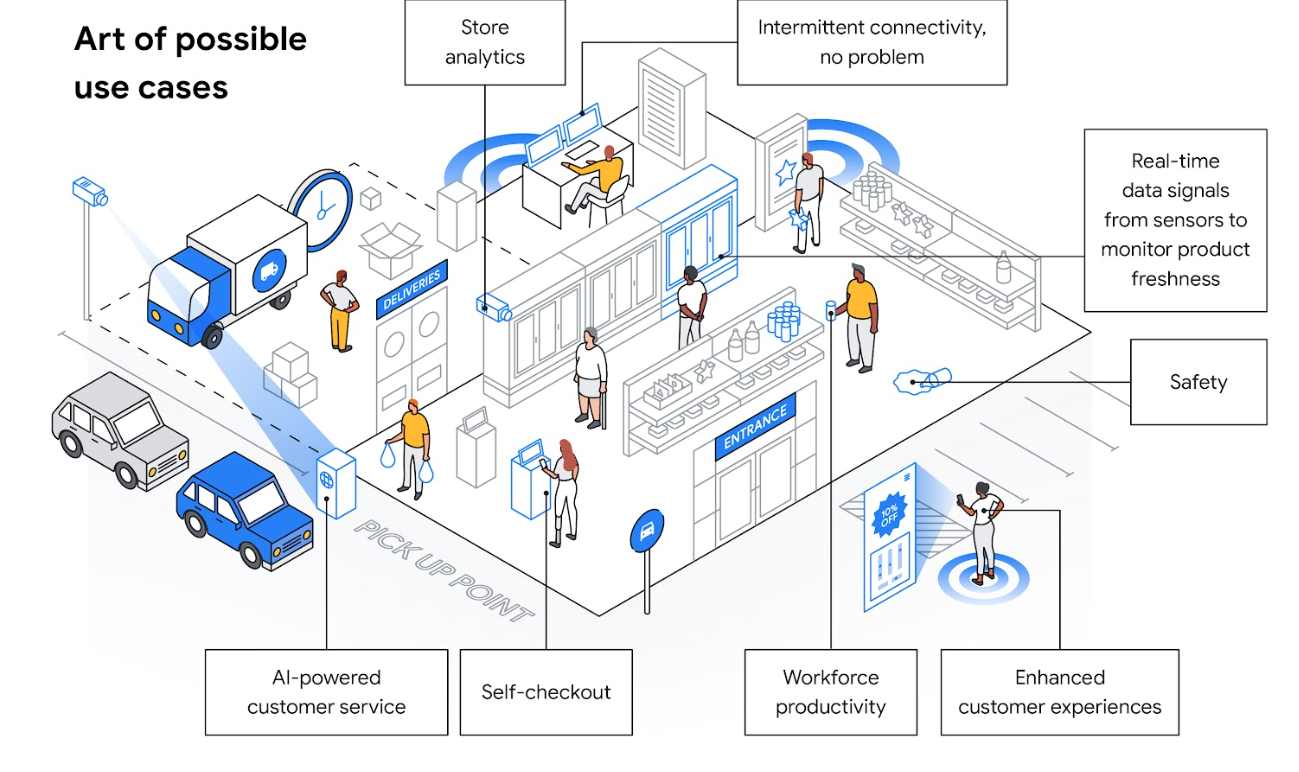

By running secured applications in containers or virtual machines (VM) on hardware that’s remotely monitored by Google Cloud, retailers can focus on managing their applications and business without worrying about the cost of purchasing and managing IT hardware and the platform stack.
GDC Edge also helps ensure business continuity even when store connectivity is lost or degraded. Once connectivity is restored, GDC Edge syncs metrics and logs to the cloud, and automatically picks up and deploys any changes to system configuration or patches. This allows retailers to modernize operations across stores in all locations without the need for expensive network connectivity upgrades.
Google Cloud and GDC Edge appliances operate by sharing security responsibilities with customers. Customers are responsible for the physical security of the hardware, such as limiting access to authorized personnel, while Google Cloud is responsible for the security of the appliance hardware. For example, we built in data encryption that allows customers to encrypt data during upload, during transit to the cloud, and at rest in Cloud Storage using the AES-256 encryption algorithm. Learn more about security and our shared responsibility model here.
You can also learn more about the art of the possible for retailers at the edge in “Modern retail at the edge: Directions for 2023 and beyond,” research from Omdia commissioned by Google Cloud. Here. you’ll gain valuable insights from 112 retail business leaders including: key drivers to prioritize edge computing; organizational barriers to unlock innovation at the edge; and how transformations, investment, infrastructure, and suppliers can make or break a successful deployment.
How we do it
To get a better idea of how this works, let’s look at how to build a contactless shopping system using GDC Edge as an example. We deploy special high speed and precision cameras that identify when customers pick up products or put them back on the shelves. These cameras are designed with hardware security features, including end-to-end encryption of data — both locally and in transit between services. To spot anything the cameras might have missed, we also deploy shelf sensors that accurately detect and identify the products on the shelves.
These devices interact with different container or virtual machine-based applications that run on GDC Edge hardware in the stores. These applications process data and compute retail operations locally from the cameras and sensors. The logical diagram details the high level architecture used to bring the power of Google Cloud to contactless checkout solutions across regional stores.
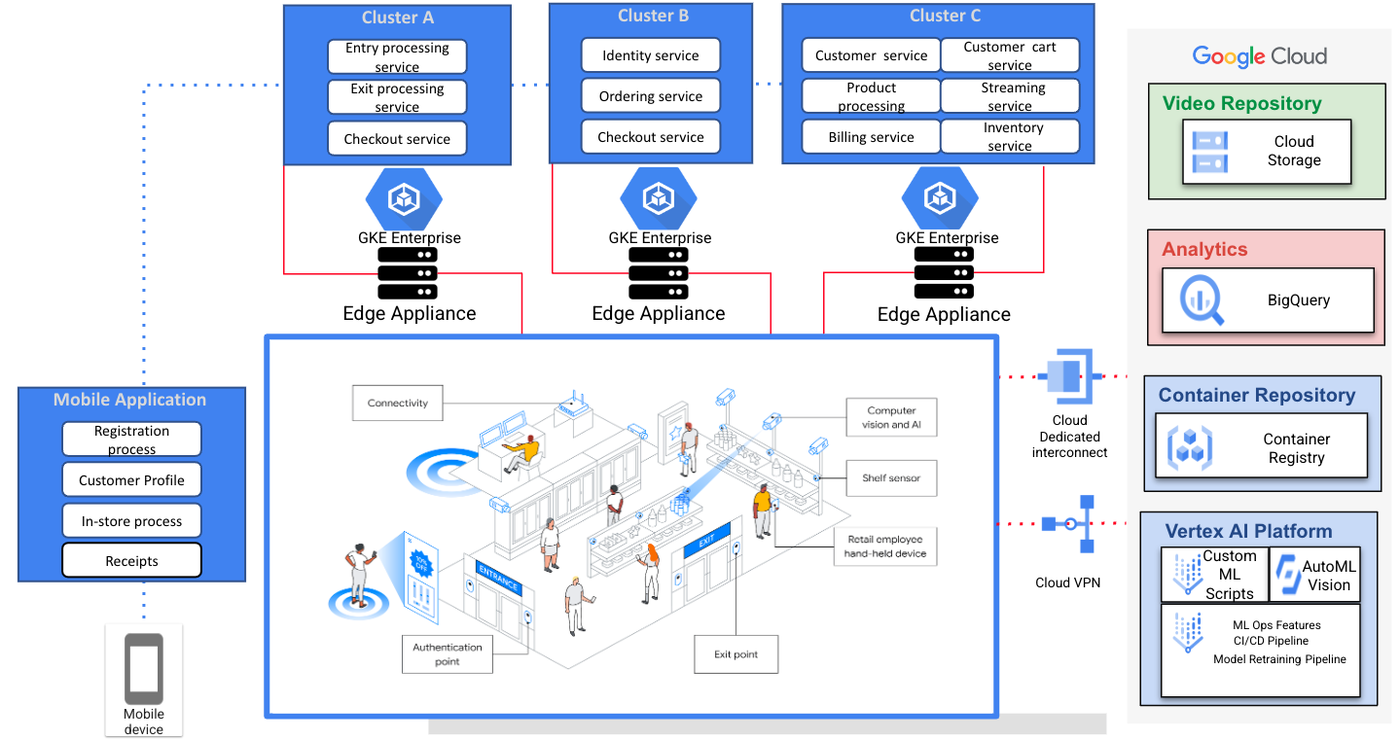

In this architecture, we can see how the containerized applications power a contactless checkout shopping system. It starts with having customers install the mobile application on their handheld devices. Retailers scan these customers’ user profiles when they enter, registering the identity and using the profile management services running on the appliances.
The overall shopping experience is completely monitored through a series of high speed camera and sensor data that is streamed to the local appliances. Once data is received, respective applications process the ingested data and use AI to determine details such as the number of products on the shelf, customer movement in the shop, and what a customer picks from the shelf.
As customers add or remove items from their shopping cards, localized applications process the orders for billing. When customers walk out from the store, sensors trigger the system to process the bills and issue receipts. Furthermore, real-time inventory is updated with quantities removed from the shelves. Retailers can then transfer data to the cloud for long term storage or analysis using BigQuery and AI tools. AI Tools can be used to train models that help with inventory stacking, pricing, customer campaigns, and overall improvement in the customer experience.
This architecture is specific to building a cashierless, contactless, or unattended retail shopping system, but it can be customized for other use cases. With some slight adjustments, retailers can incorporate the same improved customer shopping experience and reduced operational overhead wherever they are needed.
GDC is not limited to retail use cases only. Watch how customers and partners such as Deloitte use GDC to deliver modern applications equipped with AI, security, and open source at the edge with GDC.
Let's build
Whatever retail use case you’re building toward, Google and Deloitte can help leverage the latest in edge software and hardware to overcome the challenges of operating in geographically dispersed stores.
Get started today by booking a meeting with the Google Cloud and Deloitte edge experts today!
Acknowledgements
Special thanks to Mamoun Hirzalla (Deloitte) for contributing to this article.
